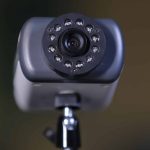With the rapid progression of technology in recent years, our world is becoming increasingly digital. This transition is not only evident in our everyday lives but in educational and cultural institutions as well. One such area where technology has made a significant impact is the museum sector. Here, augmented reality, a concept once limited to the domains of science fiction, is emerging as a potent tool to revolutionize the visitor experience.
Augmented Reality: A New Frontier for Museums
Museums, with their fundamental objective of educating and enlightening visitors, are continually seeking innovative ways to enhance their exhibits. Augmented Reality (AR) has presented itself as a novel solution to invigorate traditional museum experiences.
Cela peut vous intéresser : What Are the Best Practices for Digital Marketing and Growing Your Online Presence?
This technology superimposes digital content onto the real world, expanding the scope of information that can be conveyed. Through a device such as a smartphone, tablet, or AR glasses, visitors can view exhibits in a more engaging and immersive way than before. But how exactly does augmented reality enhance interactive learning in museums?
Interactive Learning Through Augmented Reality
In traditional museum settings, visitors are typically passive recipients of information. They walk from exhibit to exhibit, reading placards and observing artifacts. Digitally-augmented exhibits, however, transform visitors from passive observers into active participants.
A lire également : What are the latest breakthroughs in biodegradable plastics?
AR technologies enable museums to offer interactive learning experiences that provide deeper insights into exhibits. For instance, visitors can point their device at an artifact to learn more about its history, origin, and significance. They can view 3D reconstructions of ancient ruins, watch historical events unfold, or even interact with digital characters. Such experiences make learning more engaging, fostering a stronger connection with the content.
Furthermore, AR provides an avenue for storytelling. Stories are powerful catalysts for learning, and AR takes storytelling to a new level. Visitors are not just told a story; they become part of it. This interactivity creates an emotional connection with the content, helping visitors retain information more effectively.
The Immersive Potential of Augmented Reality
One of the most significant advantages of AR is its ability to create immersive experiences. Immersion refers to a state where the user feels completely engaged and involved in the digital environment. In a museum context, AR can create this immersion, enabling a higher level of engagement with exhibits.
For example, in an art museum, visitors can use AR to step into a painting and explore its world, interacting with the elements and understanding the context in which the artwork was created. Similarly, history museums can use AR to recreate historical events, allowing visitors to witness these events first-hand. This level of immersion is something that traditional exhibits cannot achieve, making AR a powerful tool for enhancing the museum experience.
Augmented Reality Enhancing Accessibility
AR technology also holds promise in making museum content more accessible. This includes providing translations for multilingual visitors, offering audio descriptions for visually impaired individuals, or presenting information in simplified language for younger audiences.
AR can also democratize access by bringing museum experiences to those who may not be able to visit in person. With AR technologies, museums can create virtual tours where online visitors can interact with exhibits and access enriched content, just like they would in a physical visit.
The Future of Museums with Augmented Reality
The potential of augmented reality in museums extends far beyond the current applications. Looking ahead, we can envision a future where AR plays a central role in museum visits.
Crossref technologies could enable even more personalized experiences. Visitors could choose their interests before the visit, and the AR system would guide them through a customized tour, highlighting relevant exhibits and providing relevant content. AR could also facilitate social experiences, where visitors can share their experiences and insights with others, turn museum visits into more communal and collaborative events.
As we stand on the cusp of this exciting new era, it is clear that augmented reality has an essential role to play. By enhancing the learning experience, fostering immersion, increasing accessibility, and paving the way for future innovations, AR is set to transform museums from static institutions into vibrant, interactive, and inclusive spaces for learning and discovery.
The Role of Mixed Reality in Enhancing Museum Experiences
Mixed reality technology, which combines elements of both virtual and augmented reality, is another key area that holds immense potential for improving and enriching museum experiences. This powerful tool, which overlays digital content onto the physical world while also allowing for real-time interaction, is being adopted by an increasing number of cultural heritage institutions.
Studies available on Google Scholar suggest that mixed reality can provide a more heightened and immersive learning experience than traditional AR. Unlike AR, which simply superimposes digital content onto a user’s view of the real world, mixed reality allows users to interact with this digital content in three-dimensional space.
For example, in a history museum, visitors could use mixed reality to physically interact with a digital replica of an artifact, enabling them to inspect it closely from all angles. In an art museum, visitors could manipulate digital versions of sculptures or installations, changing their size, position, or orientation to gain a better understanding of the artwork.
This ability to interact directly with digital content can significantly enhance the user experience, making information more tangible and engaging. According to previous studies, this not only makes learning more fun but also promotes a deeper understanding and retention of information.
Furthermore, by combining the best aspects of both virtual and augmented reality, mixed reality can offer a more comprehensive and immersive experience. It enables museum visitors not just to view digital content, but to fully explore and inhabit these digital spaces. This sense of immersion and interactivity could become a defining feature of future museum experiences.
Concluding Thoughts on Augmented Reality in Museums
The rapid development and adoption of augmented reality and its derivative, mixed reality, are reshaping the landscape of museum experiences. As technology continues to evolve, so do the possibilities for museums to deliver richer, more engaging, and more accessible learning experiences.
Museums are no longer merely places to view artifacts; they are becoming interactive, immersive spaces where visitors can explore and connect with cultural heritage in new and meaningful ways. Through the use of AR and mixed reality, museums can transcend the limitations of physical exhibits, creating richer, more engaging experiences that foster a deeper connection with the past.
The transformative potential of AR technology extends beyond the museum walls. By facilitating virtual tours, it enables those who can’t visit in person to explore museum exhibits from the comfort of their own homes. By offering translations and audio descriptions, it makes cultural heritage more accessible to different audiences.
The impact of AR on museums is a testament to the power of technology to enrich our understanding and experience of the world. As we move towards the future, one thing is clear: augmented reality will continue to play a central role in shaping the museum experience. With continued innovation and exploration, we can expect to see even more exciting advancements in the field.
As we look forward to a future where our museum experiences are enhanced by AR and mixed reality, we must also remember to preserve the core values that define museums: education, enlightenment, and the celebration of cultural heritage. After all, technology should serve to enhance – not replace – these fundamental principles.













